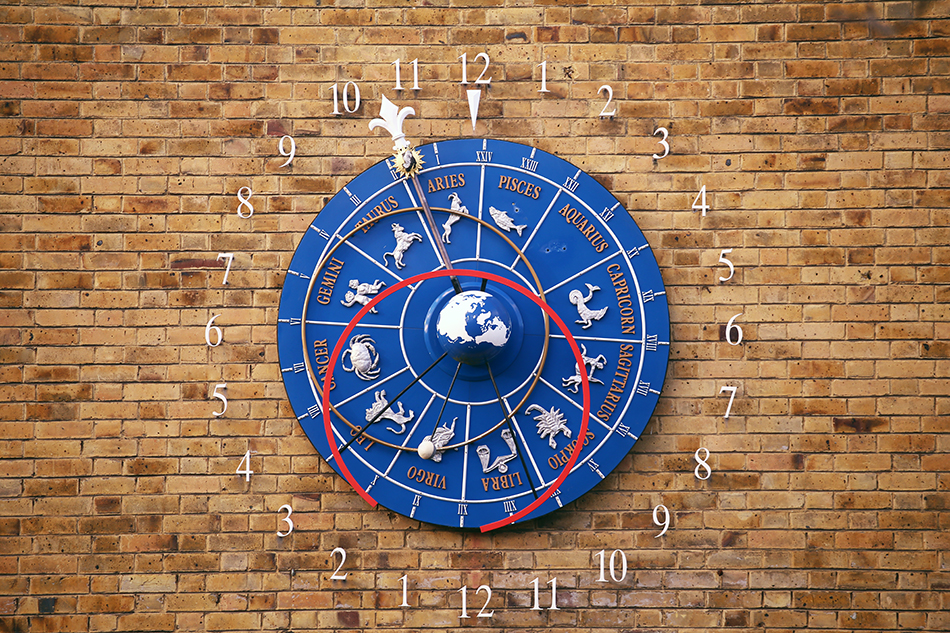
Although time and its measurement is a fundamental component of human life, a special type of clock which takes matters to the next level is the so-called
astronomical clock and whose purpose is not to measure time per se but to convey astronomical information and, in particular, the relative position of the
Sun and Moon as well as the zodiacal constellations and, in some cases, the position of the planets all as a function of time.
The oldest such effort to effectively emulate the overhead celestial sphere (ie a mini-planetarium) is the
Antikythera Mechanism which was discovered in 1901 totally by
accident by sponge divers off the coast of the Greek island of Antikythera. It has been dated to approximately 80 BC and it is believed to be the work of
Poseidonius of Rhodes. The Antikythera Mechanism is currently on display
at the National Archaeological Museum in Athens, Greece.
Note: The city of Leicester with a population of about 370,000 residents lies 140 kilometers north of London and is one of the
biggest cities in England. Its early history is similar to that of York further north as it has ties dating back to the Roman and Viking periods with the
Romans naming the city Ratae Corieltauvorum. It boasts the well-known University of Leicester where DNA profiling (aka genetic fingerprinting) was first developed
in 1984 and boasts a student population of about 17,000.
The astronomical clock below graces the entrance to the university's Rattray Lecture Theatre. Installed in 1989, the 2.4-meter astronomical clock was designed
and built by Professors Allan Mills and Ralph Jefferson using a geocentric model of the universe with Earth fixed at its center. The clock is quite unique as
it uses a 24-hr display (arabic numerals) comprised of two 12-hr segments starting with 12 noon at the top where a white fleur-de-lis denotes the current time
in GMT.
The pendant with the Sun illustrates where on Earth it is currently noon (ie solar time) with the Sun directly overhead whereas the ring with Roman numerals
is used to indicate sidereal time, thus accounting for the 23-hr 56-minute rotation of the Earth relative to the stars, as well as the current constellation which
the Sun is traversing (Aries in this example) with the help of the following innermost ring with zodiacal signs. The red circle is used to denote the horizon
with the Sun, Moon and stars rising to the left and setting to the right with the Sun partially eclipsed by the arc at left indicating twilight dawn and
similarly for twilight dusk and the arc to the right. The Moon is also modelled by showing the constellation it is currently passing through (Virgo in the example
below) whereas its phase is implied by its position relative to the Sun and where, for example, it would be directly opposite the Sun for full Moon. Finally,
the gold circle is used to denote the ecliptic and Earth's 23.45° tilt relative to its orbital plane around the Sun and its impact on seasonal variation
in daylight (longest days during the summer and shortest days during winter with the symbol of the Sun being furthest or closest to the golden ring, respectively).
Note: For a view of the astronomical clock using shorter focal length, please click
here.
Note: For additional results involving astronomical clocks from around the world, please click
here.
|
Body: Sun Mass: 332,900 x Earth Mass Eq Diameter: 109.1 x Earth Distance: 149 million km RA / Dec: 23h 41m 41s / +89° 19' 51" Diameter: 32.16' Magnitude: -26.8 |
 |
Date: Nov 28, 2023 Location: Rattray Lecture Theatre, University of Leicester, Leicester, England Equipment: Canon EOS 6D Baader BCF2 Filter Canon EOS EF 70-200mm f/4 L @ 159 mm / f4.0 Exposure: 1 x 1/500 sec ISO 320 JPG Fine Image Format 5472x3648 Image Size Custom White Balance Continuous Servo Mode Manual Mode Software: Photoshop CS6 Processing: White Balance Adjustment Resampling JPG Compression |